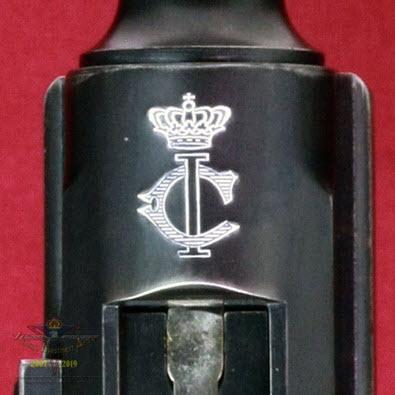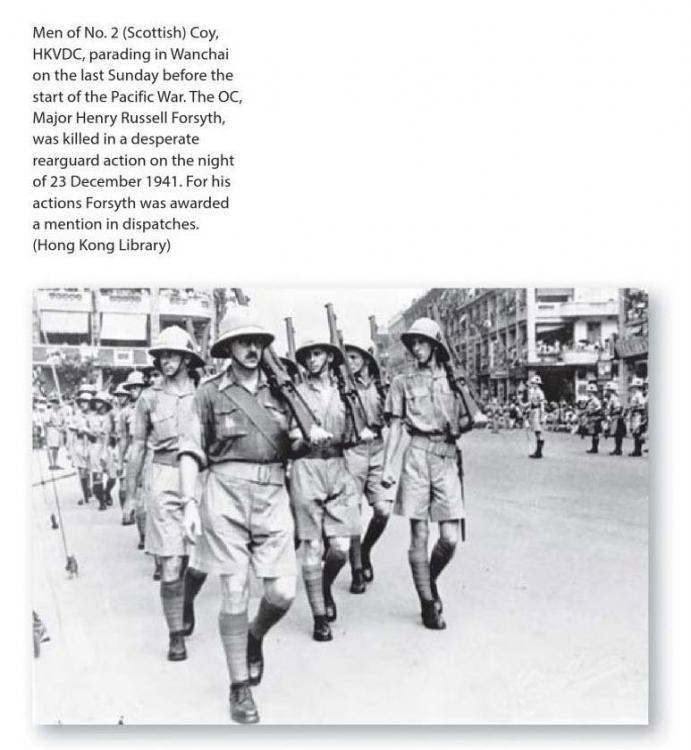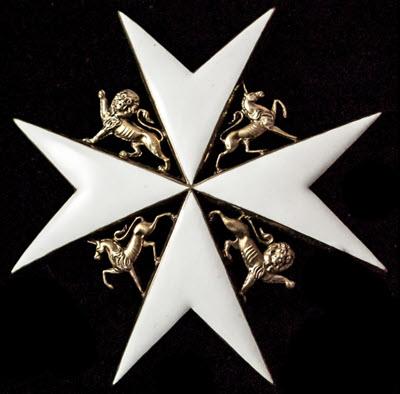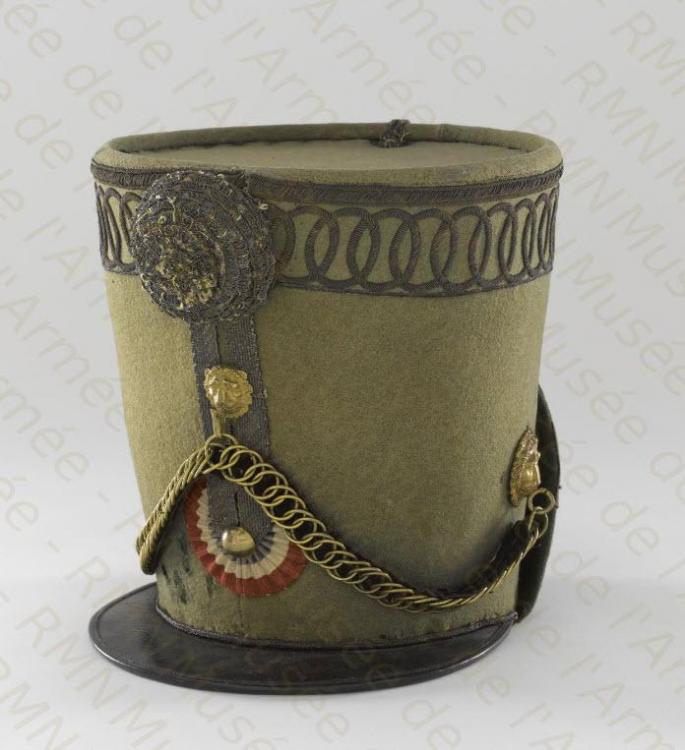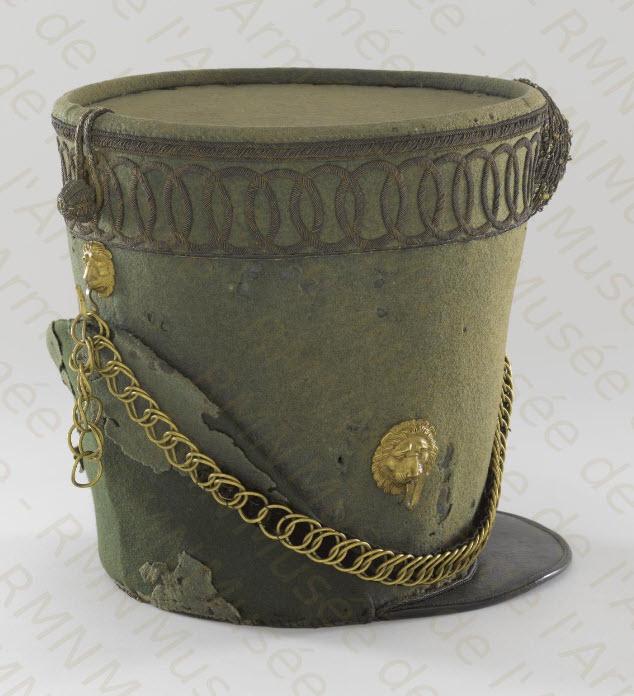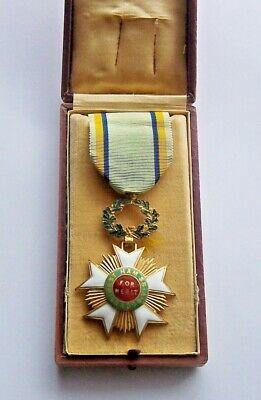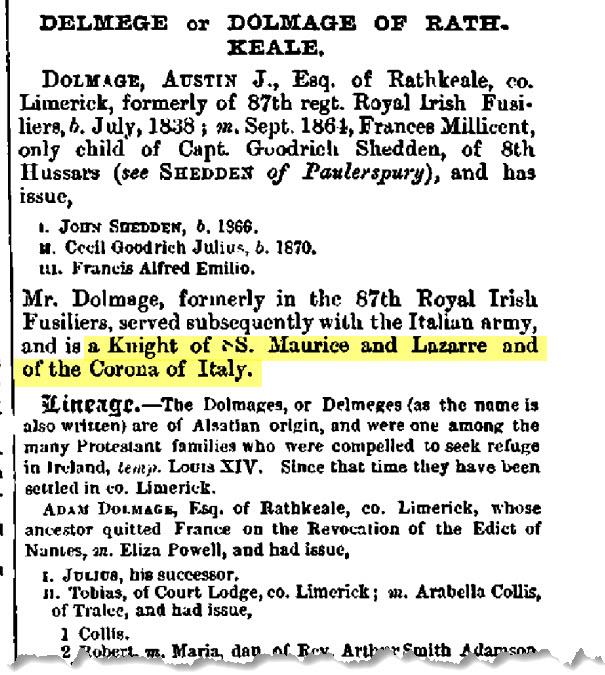-
Posts
581 -
Joined
-
Last visited
-
Days Won
2
Content Type
Profiles
Forums
Blogs
Gallery
Events
Store
Everything posted by Trooper_D
-
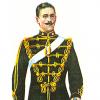
Marry this Girl! What a trooper!!!!
Trooper_D replied to Chris Boonzaier's topic in Firearms & Ordnance
...and a smile throughout! This was, of course, the wonderful Mae of the C&Rsenal YouTube channel. If you want to hear her views on the Lewis gun (based on her experiences firing it on the range) in a video worth watching in its own right from the start, here's the link, -
... which brings us back to this story (found elsewhere on GMIC), which illustrated to me just how low-tech you can be and still produce 'acceptable' fakes (made in a garden shed, apparently), https://www.derbytelegraph.co.uk/news/derby-news/derby-fraudster-made-thousands-selling-4208225 Thanks for posting the fascinating pictures of what I assume is an Imperial Russian mint, JapanX.
-
I can't help but note the similarities between this mystery badge and the cypher of Carlos I of Portugal, as shown engraved on the detail from an image of a Luger pistol destined for Portugal, below. I cannot give an explanation as to why this might be but I note that Kaiser Wilhelm visited Carlos in Portugal in 1905. Carlos was, of course, assassinated in 1908. Source: https://www.phoenixinvestmentarms.com/2145KingCarlos00.html
-
Glenn can answer for himself but I think that JapanX has put his finger on the answer. If you are fairly new to all this, you might not be aware that, during the period we are talking about, each of the states making up 'Germany' compiled lists of their officers, broken down into units, with one of the pieces of data shown against each name being their awards. These are the rank lists. There are people round here who know their way round these rank lists backwards and can very quickly search for any given combination of awards to narrow down a particular combination to a name or groups of names. I should add that, if you recognise the unit from the uniform the subject is wearing, it means that you can go straight to the rank list for that unit, which in turn cuts down the time required to search. That is not to say, of course, that Glenn doesn't have a photographic memory and never forgets a face
-
The original post was a long time ago, but I thought - for anyone who reads it now - I would provide a bit more information on this hussar atilla, a better image of which can be seen on the Imperial War Museum's website, here, https://www.iwm.org.uk/collections/item/object/30097064 It belonged to Vladimir Littauer who served in the 1st Sumsky Hussars from 1913 and survived the Great War, eventually to end up in NYC running a riding school and, afterwards, becoming one of the USA's leading equestrian instructors and, indeed, theoretician who advocated the 'forward seat' riding style. His Wikipedia page appears to be accurate, https://en.wikipedia.org/wiki/Vladimir_Littauer Perhaps of more interest to GMIC: along with a number of equestrian training books, he wrote Russian Hussar - A Story of the Imperial Cavalry, in which he describes his military career from the Nicholas Cavalry School in St. Petersburg to the Revolution and, afterwards, fighting with the White Russian forces. It is still in print and is a 'must-read' for anyone interested in the Imperial Russian cavalry. I am reading it at the moment but have only just got to the start of the Great War so cannot yet say whether he received the awards on this bar and, thus, whether it might be his (the IWM page doesn't mention it).
-

Imperial Russia December 1918 Photo ID document
Trooper_D replied to Claudius's topic in Russia: Imperial
A very interesting read! Thank you. -

Imperial Russia December 1918 Photo ID document
Trooper_D replied to Claudius's topic in Russia: Imperial
"To be frank Q, 183 looks like a ladies' pistol.* I'll take 182, thanks". * (although Bond's original pistol, a Beretta 418, was little better, I understand!) -

The tragic death of "A Soldier Unafraid".....
Trooper_D replied to Chris Boonzaier's topic in France
Would you be kind enough to post a link to your blog post, please, Philippe? -
My pleasure, Doc. As an additional data point, you might want to consider the image below, which comes from an Osprey Publishing book on Hong Kong during WW2 (click on the source reference to see it online at Google Books). You will note the triangular flashes on their helmets! Benjamin Lai, 'Hong Kong 1941–45: First strike in the Pacific War'. Bloomsbury Publishing, 2014, p. 50 Edited to add: This Facebook posting confirms that the Scottish Company adopted a uniform based on the Gordon Highlanders https://www.facebook.com/commonwealthforces/posts/courtesy-of-ron-abbott2nd-scottish-company-the-hong-kong-volunteer-defence-corps/1092477694167295/
-
My pleasure, Doc. As an additional data point, you might want to consider the image below, which comes from an Osprey Publishing book on Hong Kong during WW2 (click on the source reference to see it online at Google Books). You will note the triangular flashes on their helmets! Benjamin Lai, 'Hong Kong 1941–45: First strike in the Pacific War'. Bloomsbury Publishing, 2014, p. 50
-
I have a couple of possibilities for you, if this photo was actually taken in Hong Kong. My first step was to establish whether Google Image Search could find any other example of this photo with a caption. It couldn't. Next, I asked myself the question 'which Highland regiments were garrisoned in HK, in the inter was years'? Wikipedia, with the usual caveats about it as a reliable source, lists all the units who have been based in HK for a tour, https://en.wikipedia.org/wiki/British_Forces_Overseas_Hong_Kong The list shows that the only kilt-wearing regiment were the 1st Battalion, Seaforth Highlanders (1937–38). However, I also stumbled across a post on this forum, https://gwulo.com/atom/30818 which shows a photo of a group of soldiers from 2nd (Scottish) Coy. HKVDC (Hong Kong Volunteer Defence Corps), with the following post describing the sporrans as being Gordon Highlander pattern. To my eye, the sporrans are the ones worn in your photo so, as the Gordon Highlanders never served in HK, it suggests that your photo is of an inspection of the 2nd (Scottish) Coy. HKVDC. In order to date the photo, it might be worth trying to identify the inspecting officer, who is a member of the general staff and may be Commander British Troops in China, with, inevitably, Wikipedia having a list of them, https://en.wikipedia.org/wiki/Commander_British_Forces_in_Hong_Kong For what it is worth, based on the pictorial evidence in the link below, I wouldn't discount it being Major-General Edward Grasett, perhaps inspecting the HKVDC on taking command. https://en.wikipedia.org/wiki/Arthur_Edward_Grasett
-
Thanks for showing the astonishing image of Princess Louise Margaret, Duchess of Connaught as she became after marriage. https://en.wikipedia.org/wiki/Princess_Louise_Margaret_of_Prussia A slightly larger image can be found on the UK Royal Collection web site, https://www.rct.uk/collection/2810025/the-duchess-of-connaught-1860-1917-as-colonel-in-chief-of-the-64th-infantry Apart from being an extremely handsome portrait, two and a half things strike me about this photo. First, I hadn't realised how shiny a new Pickelhaube could be. Secondly, I never expected to see a UK Order of St John medal worn court mounted in the Prussian style. Rather nice! My second and a half observation is that she is wearing it back-to front as the Lion should be in the top right quadrant rather than the Unicorn (see below) https://en.wikipedia.org/wiki/Order_of_Saint_John_(chartered_1888)#/media/File:Star_-_Venerable_Order_of_St_John.jpg
-

Picture - old gentleman, high ranking orders, help appreciated!
Trooper_D replied to ArHo's topic in Russia: Imperial
Glad to have been of help in your future research projects. I believe that there are more sophisticated search engines which are optimised for what are called a 'Reverse Image Search' (Google that phrase and you will find many of them) but Google Images is always a good start. btw https://images.google.com/ is a better link than the one I gave in my previous post. -

Picture - old gentleman, high ranking orders, help appreciated!
Trooper_D replied to ArHo's topic in Russia: Imperial
I don't know how Graham did it, ArHo, but if you upload your image to Google image search (https://www.google.com/imghp then click the camera icon and, after that, the Upload an Image tab) you will see your man about the fourth result down. (I used the URL of your image.) -
I was intrigued by the use of the English name 'Spencer' for a seemingly German item of uniform. As ever, the Oxford English Dictionary is helpful, The Wikipedia article on the second Earl alleges that the garment came about when the tails on the Earl's (perhaps double-breasted?) coat got burnt and he had them cut off. Other Internet sources suggest that the new short coat was adopted by the Napoleonic French army. However, do we know that the term 'Spencer' is actually correct for the tunic worn by the Bavarian Chevauleger. Might someone be able to provide an extract of Bavarian dress regulations?
-

Royal Marine Artillery Girls School
Trooper_D replied to Joy Dean's topic in Great Britain: Research, Documentation & History
Peter I don't think that this was a Regimental school (for the training of boy soldiers) but, rather, a school for children of the Regiment. Thus it was not set up to educated boy soldiers but to conform with the requirements of the various Education acts as they pertained to the children of Married Quarters (in its broadest sense) were concerned. From 1899, all children were meant to be in school from the ages of five to 12, as per this link https://www.parliament.uk/about/living-heritage/transformingsociety/livinglearning/school/overview/1870educationact/ Interestingly, after the 1902 Education Act, the education of children became the responsibility of "local education authorities under the control of the county and county borough councils" (see link below), which suggests to me that this photo was taken before that date (the physical training instructor in the photo would have been a civilian, post 1902, I would have thought). https://www.parliament.uk/about/living-heritage/transformingsociety/livinglearning/school/overview/reform1902-14/ -

Royal Marine Artillery Girls School
Trooper_D replied to Joy Dean's topic in Great Britain: Research, Documentation & History
Joy As I expect you know, Eastney Barracks was the home of the Royal Marine Artillery from 1867 until their amalgamation with the Royal Marine Light Infantry (to form the Royal Marine Corps) in 1927 https://www.geograph.org.uk/snippet/13158 I imagine that this was a girls' school established - and situated in the barracks, perhaps - to educate the daughters of the men living in married quarters. -
You might like to compare it with the photos below, which come from the Musée de l’Armée Invalides web site. More details of this exhibit can be found here, https://basedescollections.musee-armee.fr/ark:/66008/14937
-

West Ham, London - Catholic (?) Award / Medal
Trooper_D replied to oamotme's topic in Masonic Medals & Jewels
Owain You may have seen this already but Google threw up this variant, which had been on sale at eBay. Unfortunately, the listing is no longer available. However, the following was discernible from the search results: "UNUSUAL FRENCH/BRITISH FULL SIZE MEDAL (WEST HAM SS A LONDON) Here we have a full size medal that we know nothing about. Found in France it is made in the French style." I'm not sure that that is particularly helpful but it is another data point. -

Group to James Austin Dolmage
Trooper_D replied to ilja559's topic in Southern European & Balkan States
More here from Burke's A genealogical and heraldic history of the landed gentry of Great Britain & Ireland (1906) I suspect that he volunteered to serve with Garibaldi, as suggested by the reference you found, ilja559. In any event, the 1911 UK census shows that his son John was born in Sorrento in 1866. -

Group to James Austin Dolmage
Trooper_D replied to ilja559's topic in Southern European & Balkan States
It probably is. There seems to be some variation in what he called himself: sometimes James, sometimes Jonas - and then not always as his first name. More here, http://www.thepeerage.com/p38093.htm#i380923


